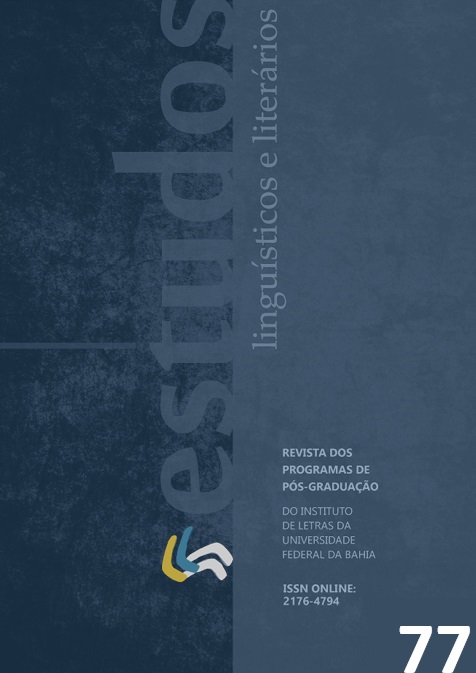MANIPULAÇÕES E SANÇÕES EM TORNO DA PANDEMIA DO COVID-19:
ANÁLISE SOBRE AS POLÉMICAS DOS MODELOS DE ISOLAMENTO
DOI:
https://doi.org/10.9771/ell.v0i77.55219Palavras-chave:
Pandemia, Semiótica Discursiva, Debate, Covid-19Resumo
A chegada repentina da COVID-19 no Brasil demandou uma pronta estruturação de estratégias para enfrentar a pandemia. Utilizando a semiótica francesa como aporte teórico, objetivamos averiguar quais mecanismos de manipulação e de sanção são acionados para persuadir os enunciatários a aderirem a uma de duas abordagens distintas: isolamento horizontal ou isolamento vertical. O corpus correspondeu ao recorte de dois debates da emissora CNN Brasil, disponíveis no Youtube. Os enunciadores da primeira abordagem utilizaram como estratégia de manipulação a intimidação e a sedução, no primeiro vídeo, e a sedução e a provocação, no segundo. Eles mantiveram a uniformidade dos discursos: a reclusão total da população e o fechamento dos espaços, ou saída para o trabalho para evitar a derrocada econômica. Ambos discursam sobre uma ameaça letal. Pelo desemprego e pela fome, que apresenta efeito atenuado e se torna uma estratégia mais eficaz do que a mortífera ação do vírus, que surpreendera a todos.
Downloads
Referências
BARROS, Diana Luz Pessoa de. As fake News e as “anomalias”. Verbum, v. 9, n. 2, p. 26-41, 2020.
BARROS, Diana Luz Pessoa de. Teoria do discurso: fundamentos semióticos. 3. ed. São Paulo: Humanitas/FFLCH/USP, 2002.
BARROS, Mariana Luz Pessoa. A memória do acontecido e a memória-acontecimento: um estudo semiótico dos gêneros autobiográficos. Alfa, v. 60, p. 355-383,2016.
CNN BRASIL. O grande debate - medidas contra o COVID-19. Youtube, 19 de março de 2020. Disponível em: < https://www.youtube.com/watch?v=xzy6Kv7ziO8&t=92s&ab_channel=CNNBrasil>Acesso em: 21 de março de 2022.
CNN BRASIL. O grande debate – ampliação da quarentena é boa para o brasil?. Youtube, 06 de abril de 2020. Disponível em: <https://www.youtube.com/watch?v=RWCe4r6TKb0&t=98s&ab_channel=CNNBrasil>. Acesso em: 21 de março de 2022.
DISCINI, Norma. Intertextualidade e o conto maravilhoso. 2. ed. São Paulo: Humanitas fflch/Usp, 2004.
FONTANILLE, J.; ZILBERBERG, C. Tensão e significação. São Paulo: Discurso Editorial, 2001.
GREIMAS, A. J. Sobre o sentido II: ensaios semióticos. São Paulo: Nankin/Edusp, 2014.
GREIMAS, A. J.; COURTES, J. Dicionário de semiótica. São Paulo: Contexto, 2008.
GREIMAS, A. J.; LANDOWSKI, E. Análise do discurso em ciências sociais. São Paulo: Global, 1986.
LOPES, Ivã Carlos; HERNANDES, Nilton. Semiótica: objetos e práticas. 2. ed. São Paulo: Contexto, 2005.
TATIT, Luiz. Passos de semiótica tensiva. 1. ed. São Paulo: Atelie Editorial, 2019.
ZILBERBERG, C. Elementos de Semiótica Tensiva. São Paulo: Ateliê Editorial, 2011.


